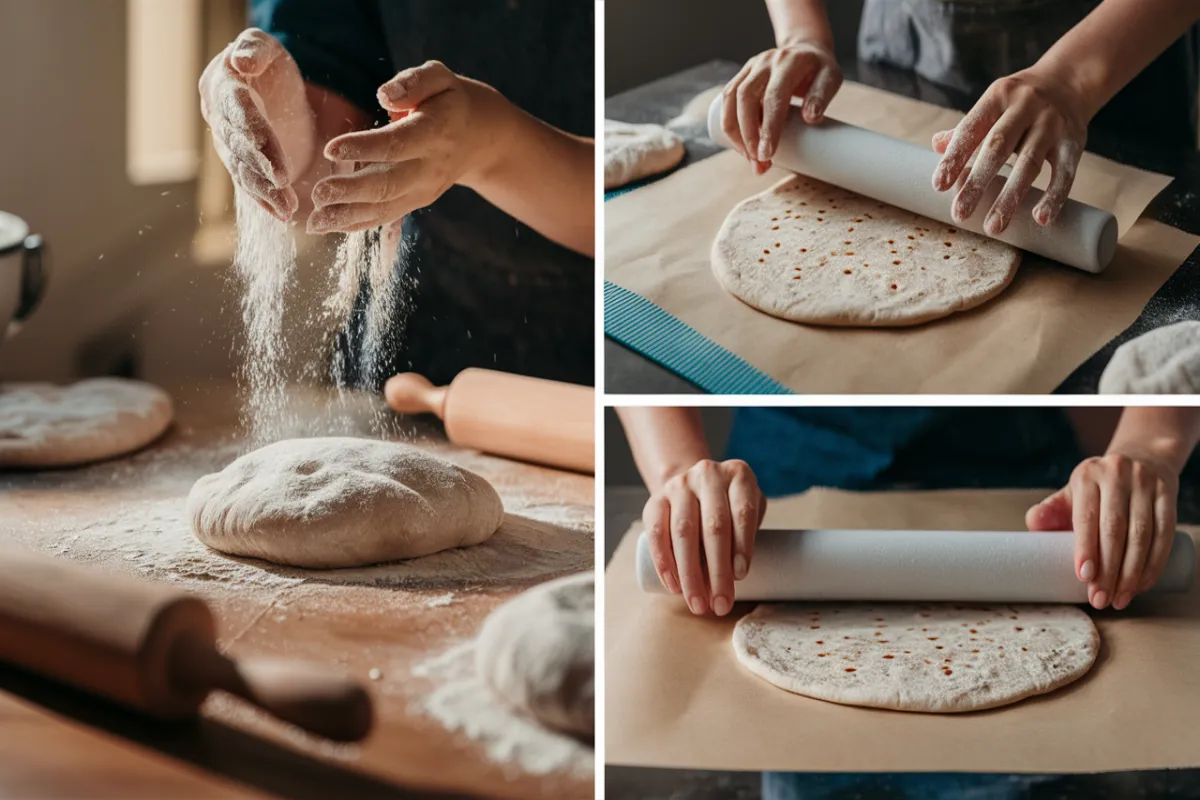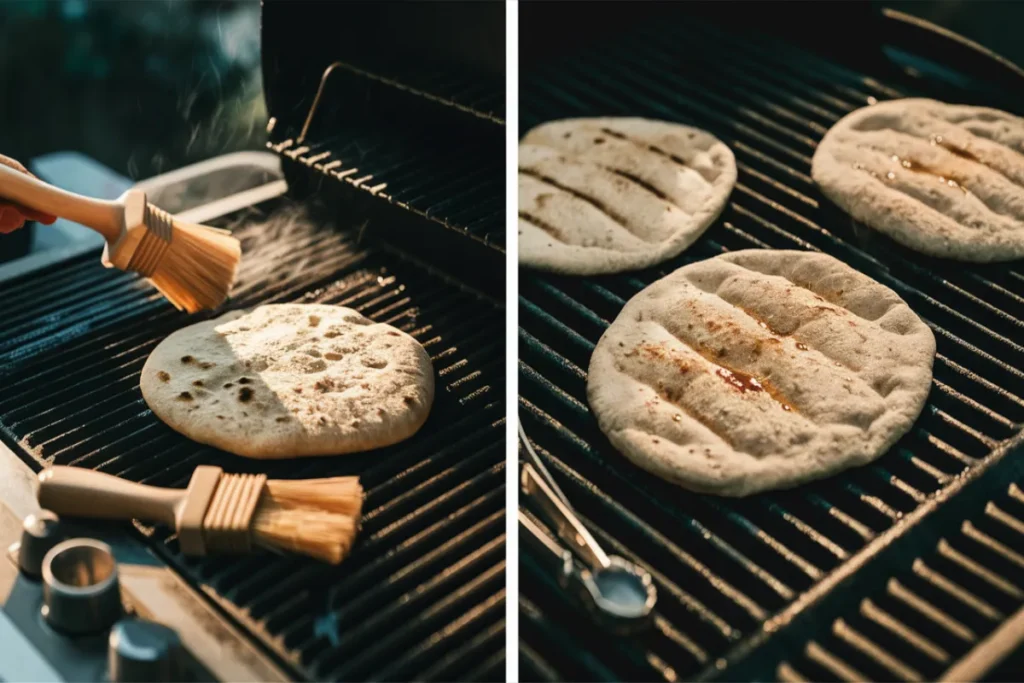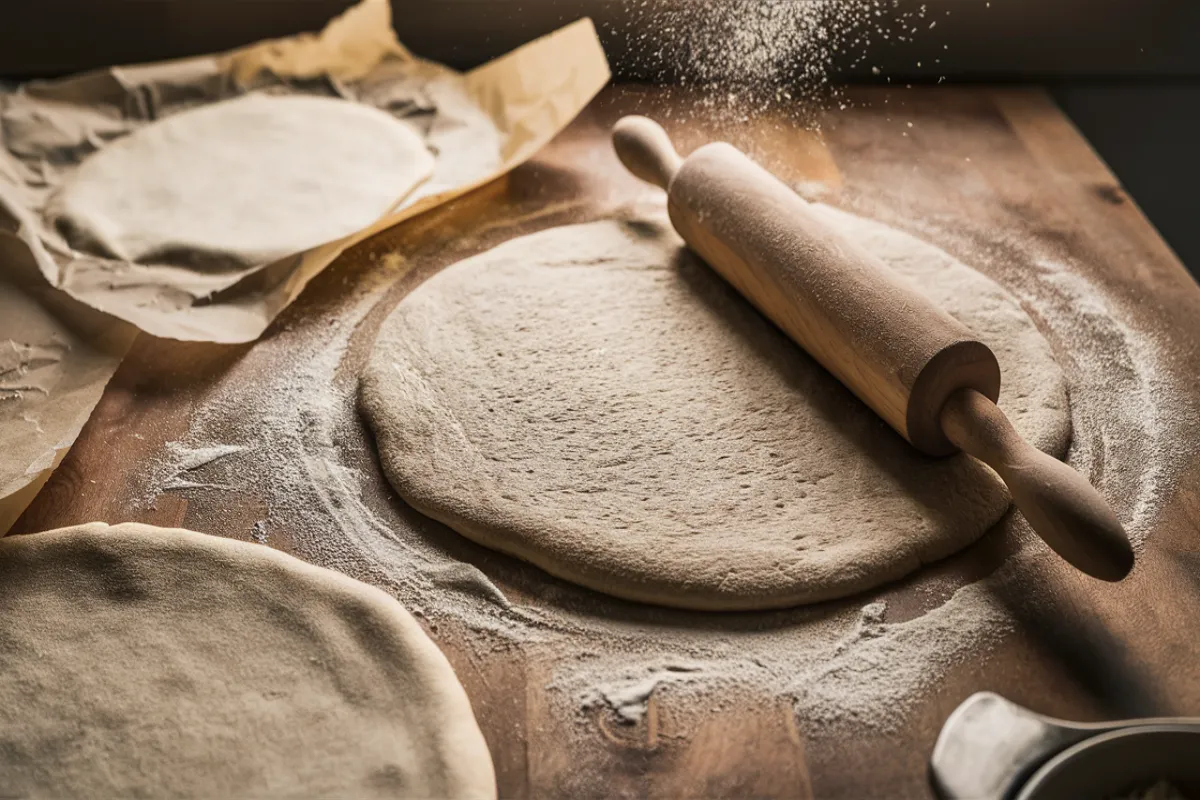Cottage cheese flatbread is a delicious and versatile dish, perfect for snacks, meals, or as a base for creative toppings. However, one common problem many people encounter is keeping the flatbread from sticking during the preparation, cooking, or even storing process. When making cottage cheese flatbread, preventing it from sticking ensures a smooth experience, from rolling the dough to serving the final product.
This comprehensive guide will show you how to keep cottage cheese flatbread from sticking by using the right techniques, tools, and tips. We’ll explore everything from preparing your workspace, cooking methods, and storage solutions.
1. Preparing Your Workspace Properly

1.1 Flour Your Work Surface
One of the most important steps in preventing dough from sticking is to flour your work surface. A light dusting of flour acts as a barrier between the dough and the surface, making it easier to roll out the dough without it sticking. You want to use just enough flour to coat the surface but not so much that it alters the consistency of your dough.
Tip:
Keep extra flour on hand while rolling out your flatbread dough. Lightly sprinkle it over the surface as needed to prevent sticking as you shape the dough.
1.2 Use Parchment Paper or Silicone Mats
Another solution for those wondering how to keep cottage cheese flatbread from sticking is using parchment paper or silicone baking mats. These create a non-stick surface for rolling out dough and baking. Silicone mats are reusable and durable, providing an even surface that ensures your flatbread won’t stick.
Parchment paper, on the other hand, is disposable and versatile. It’s perfect for placing between dough and the baking sheet to prevent sticking during baking or grilling.
Tip:
Cut the parchment paper to fit your baking sheet perfectly, so no dough touches the pan directly.
2. Rolling the Dough Without Sticking
2.1 Dust the Rolling Pin
If you’ve floured your work surface but still find the dough sticking to your rolling pin, lightly dust the pin itself with flour. The flour prevents the dough from sticking, allowing you to roll it smoothly. If your dough continues to stick, flip it over and flour both sides before rolling further.
Tip:
Rotate the dough as you roll to ensure even thickness and reduce sticking in any one spot.
2.2 Apply Oil to the Dough
Another simple trick for how to keep cottage cheese flatbread from sticking is to apply a little oil. By rubbing a small amount of oil on your hands and the rolling pin, you create a slick surface that prevents the dough from clinging. Olive oil works best as it adds flavor, but you can also use vegetable oil if you prefer a neutral taste.
Tip:
Avoid adding too much oil, as it can make the dough greasy. A light coating is sufficient for this technique.
3. Preventing Sticking During Cooking
3.1 Preheat Your Pan or Griddle
A common issue when cooking cottage cheese flatbread is that it sticks to the pan or griddle. The solution is simple: always preheat the cooking surface. When a pan is hot, the dough cooks on contact, forming a light crust that prevents sticking. A cold or unevenly heated pan will cause the dough to stick.
Tip:
Test your pan’s heat by sprinkling a few drops of water on it. If the water sizzles and evaporates quickly, your pan is ready for cooking.
3.2 Use Oil or Butter
Whether you’re cooking flatbread in a frying pan, griddle, or oven, adding a thin layer of oil or butter ensures a non-stick surface. Brush or drizzle a small amount of oil onto the pan before placing the dough. You can also use butter for added flavor and a golden-brown crust.
Tip:
Use a paper towel to evenly spread the oil or butter across the pan, ensuring full coverage without over-greasing.
4. Baking Cottage Cheese Flatbread Without Sticking
4.1 Grease the Baking Sheet
When baking cottage cheese flatbread, preventing it from sticking to the baking sheet is crucial. You can grease the baking sheet with oil, non-stick spray, or butter. However, for the best results, use parchment paper or a silicone baking mat in addition to greasing. This double protection ensures that the flatbread won’t stick.
Tip:
Olive oil adds flavor to the flatbread, but you can use neutral oils if you prefer a plain taste.
4.2 Opt for Non-Stick Bakeware
Non-stick bakeware is designed to prevent sticking without the need for extra oil or sprays. This bakeware is perfect for flatbread since it allows for easy removal once baked. Just remember to follow the manufacturer’s instructions to maintain the non-stick coating over time.
Tip:
Always allow the flatbread to cool slightly before removing it from the pan. Trying to remove it while still hot can cause tearing or sticking.
5. Storing Cottage Cheese Flatbread to Prevent Sticking
5.1 Stack with Parchment Paper
After baking, you’ll likely want to store leftover flatbread. To prevent sticking when storing, place a sheet of parchment paper between each piece of flatbread. This keeps the pieces separated and prevents them from sticking together, especially when stored in the fridge or freezer.
Tip:
Cut the parchment paper into small squares beforehand, making it easier to store the flatbread without hassle.
5.2 Use Airtight Containers
Moisture and air can cause flatbread to stick together or become soggy. Storing flatbread in an airtight container helps prevent this. Stack the flatbreads with parchment paper in between, and seal them in an airtight container to keep them fresh and separate.
Tip:
If freezing flatbread, wrap each piece in plastic wrap or foil first, then place them in an airtight container to ensure no moisture builds up.
6. How to Keep Cottage Cheese Flatbread from Sticking While Grilling

6.1 Preheat the Grill Grates
Grilling flatbread provides a smoky, crispy finish, but grilling also presents the risk of sticking. The first step to prevent this is preheating the grill. Hot grill grates prevent dough from sticking and help create a crust on the flatbread as it cooks.
Tip:
Use a grill brush to clean the grates before grilling to remove any residue that might cause sticking.
6.2 Brush the Grates with Oil
In addition to preheating, brushing oil directly onto the grill grates creates a non-stick surface. Use high-smoke-point oils like vegetable or canola oil, as these won’t burn easily at grilling temperatures. Once the oil is applied, place your flatbread on the grill, and it will cook without sticking.
Tip:
Use tongs to flip the flatbread while grilling to avoid sticking or tearing.
7. Common Mistakes to Avoid When Preventing Sticking
7.1 Using Cold Pans or Grills
A common mistake is placing dough on a cold pan or grill. Cold surfaces cause the dough to stick immediately. To prevent this, make sure your cooking surface is fully preheated. Waiting a few extra minutes for the pan or grill to heat up saves time and frustration in the long run.
Tip:
Always wait until the cooking surface is hot enough before placing the flatbread.
7.2 Overhandling the Dough
Overhandling the dough during preparation makes it more prone to sticking. The more you touch or fold the dough, the more likely it is to stick to your hands or surfaces. To avoid this, handle the dough gently and as little as possible.
Proper Handling of Sensitive Materials in the Workplace
Tip:
Letting the dough rest after kneading reduces stickiness and makes it easier to work with.
Frequently Asked Questions (FAQs)
Q1: Can I use non-stick spray instead of oil when cooking flatbread?
Yes, non-stick spray can be a convenient and effective option to prevent flatbread from sticking during cooking. It’s easy to apply and ensures a thin, even coating on the pan or griddle. Non-stick sprays work particularly well if you’re looking to reduce the amount of fat in your cooking, as they provide a light layer without adding significant calories or altering the texture of the flatbread.
However, while non-stick spray prevents sticking, it doesn’t add the richness or depth of flavor that oil or butter can provide. Oils like olive or vegetable oil can enhance the flatbread’s taste and texture, giving it a slight crispness. Butter, on the other hand, adds a golden-brown color and a rich, savory flavor that elevates the overall experience. If you’re focusing on flavor as well as function, using oil or butter might be a better option, but non-stick spray is a handy, calorie-conscious alternative.
Q2: Why does my flatbread stick to the baking sheet even with parchment paper?
Flatbread can sometimes stick to parchment paper if the dough’s consistency isn’t right or if the flatbread is overcooked. If your dough is too wet or sticky, it might spread or ooze onto the paper, making it more likely to adhere during baking. In this case, it’s essential to adjust the moisture level in the dough. You can do this by adding more flour to the mixture until it reaches a firm but pliable texture.
Another possible cause is overcooking. If the flatbread stays in the oven for too long, it may harden and start to stick to the surface beneath it. To avoid this, keep a close eye on your cooking time and ensure that the flatbread is removed from the oven as soon as it turns golden brown. Additionally, it’s important to let the flatbread cool slightly on the parchment paper before attempting to lift it, as this helps prevent tearing or sticking.
Q3: How can I stop my flatbread from sticking to the grill grates?
To prevent flatbread from sticking to the grill, preheating and applying oil are key. First, ensure your grill grates are fully preheated before you place the flatbread on them. A properly heated grill will immediately create a crust on the dough, which helps it release from the grates easily when it’s time to flip or remove the flatbread.
Applying oil directly to the grates also helps create a non-stick surface. Use a high-smoke-point oil, like vegetable or canola oil, since these oils can withstand high grilling temperatures without burning. You can brush the oil onto the grates with a silicone brush or use a paper towel dipped in oil, held with tongs to lightly coat the grates. This method prevents the flatbread from sticking and ensures even cooking, leaving you with a perfectly grilled flatbread every time.
Additionally, using a grilling mat or placing parchment paper under the flatbread can further reduce the risk of sticking while grilling.
Q4: Can I store flatbread without parchment paper between pieces?
While it’s possible to store flatbread without parchment paper between each piece, it’s not recommended. Stacking flatbread directly on top of each other, especially when stored in the fridge or freezer, can cause the pieces to stick together. This is particularly problematic when you try to separate them later, as the flatbreads might tear or become misshapen.
Using parchment paper between each piece creates a barrier that prevents this sticking. The parchment also helps absorb any moisture that may develop during storage, ensuring the flatbread remains fresh and doesn’t become soggy. If you don’t have parchment paper, wax paper can be a suitable alternative, or you can use sheets of plastic wrap to separate the pieces. This method will keep the flatbreads from sticking together and make reheating or serving them much easier.
Q5: Does flouring the work surface prevent dough from sticking completely?
Flouring your work surface is an important first step in preventing dough from sticking, but it may not always be enough on its own. While flouring helps by creating a barrier between the dough and the surface, you may also need to lightly dust your rolling pin and hands to avoid the dough clinging to them as well. Additionally, if the dough is particularly moist or sticky, you may need to sprinkle more flour as you work with it.
For an extra level of prevention, consider using parchment paper or silicone baking mats, as they provide non-stick surfaces that don’t require flour. Rotating the dough as you roll it out and applying flour when necessary will ensure the dough remains manageable. However, be careful not to over-flour, as this can dry out the dough and affect the texture of the final product.
In some cases, using a small amount of oil or even dusting the surface with cornmeal can also help prevent sticking, while adding a bit of texture to the flatbread.
Conclusion
Mastering how to keep cottage cheese flatbread from sticking is essential for seamless preparation, cooking, and storage. From flouring your workspace to preheating pans and using parchment paper, these techniques make the process easier and ensure perfect flatbread every time.
Whether grilling, frying, or baking, remember these tips to keep your flatbread from sticking. With the right methods, you’ll enjoy smooth, hassle-free cooking and perfectly textured cottage cheese flatbread.

